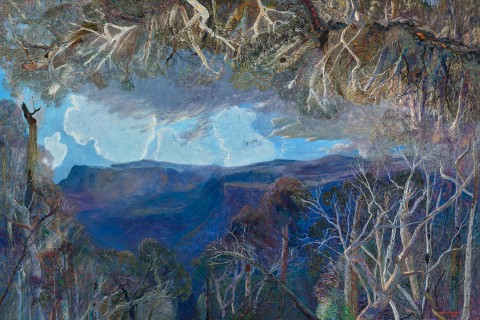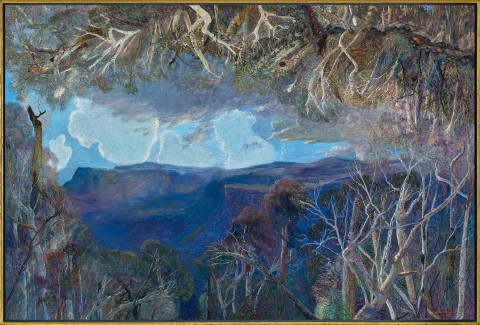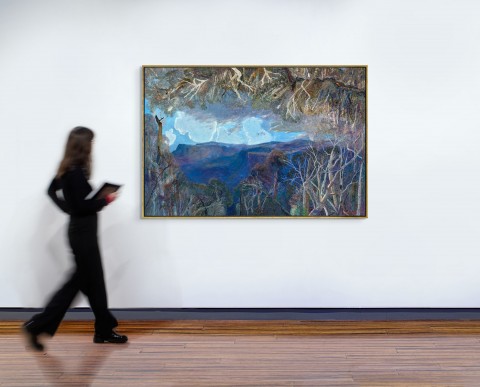TO BEECHMONT WITH STORM CLOUDS BUILDING, 2002
WILLIAM ROBINSON
oil on linen
122.0 x 183.0 cm
signed and dated lower right: William Robinson / 2002
dated and inscribed with title on frame verso: 2002 TO BEECHMONT WITH STORM CLOUDS BUILDING
Australian Galleries, Sydney (label attached verso)
Private collection, Sydney
Deutscher and Hackett, Melbourne, 9 May 2007, lot 25
Private collection, Melbourne
William Robinson: Recent Paintings, Australian Galleries, Sydney, 13 August – 7 September 2002; Melbourne, 24 September – 25 October 2002, cat. 8 (illus. in exhibition catalogue, as ‘To Beechmont with storm clouds’)
William Robinson, Rainforest and Mist (QAGOMA) copy.jpg
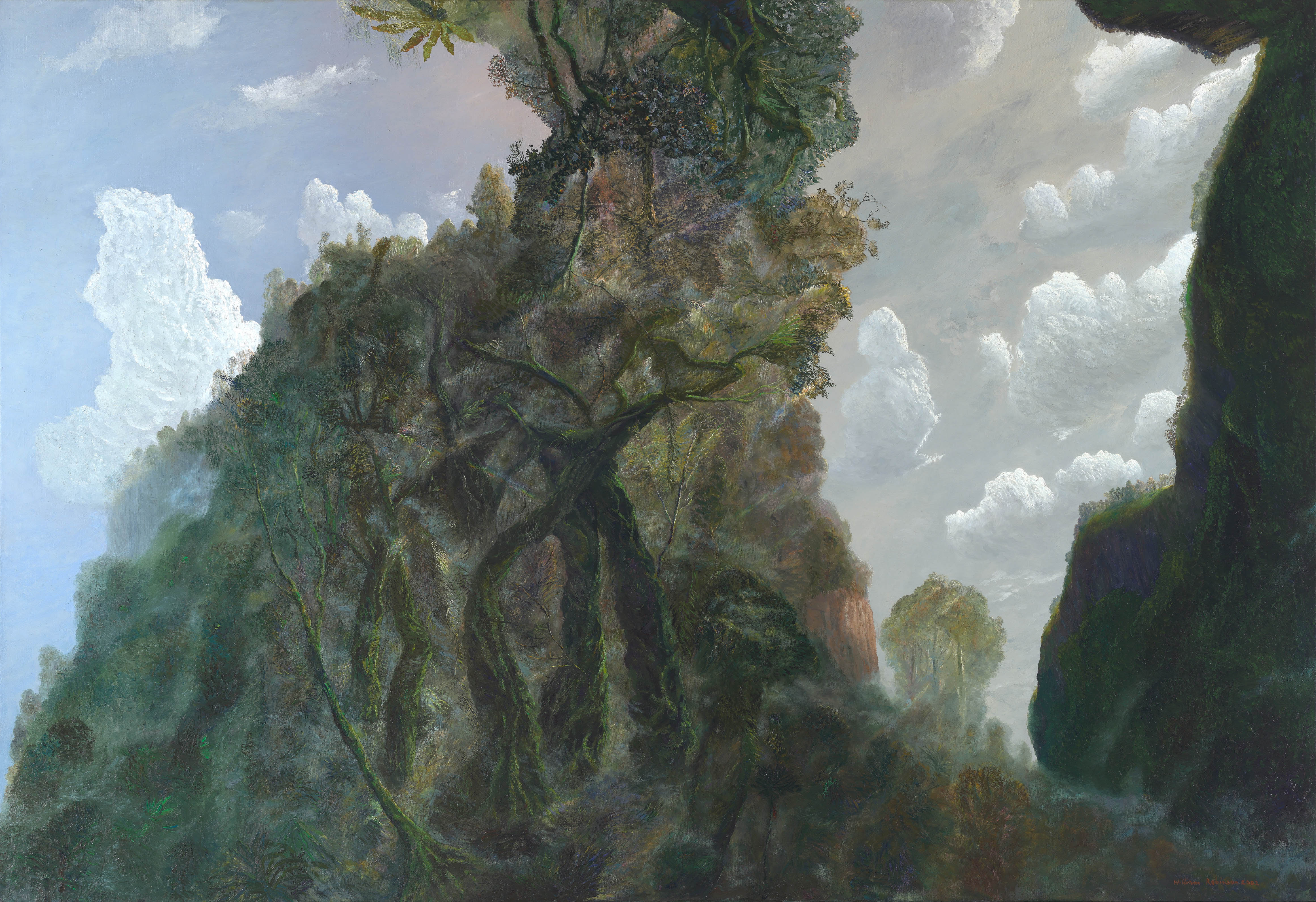
'...To see one of Robinson's landscapes is to be in it as well, to walk, and maybe to forage, with the painter through gum-thicketed gullies where any difference between the sky and its reflection is hard to tell- and probably unnecessary to know. The viewer is required to take a leap of faith, and execute something akin to a cartwheel, before penetrating Robinson's dizzy realms. The resulting experience is partly aesthetic, partly athletic...’1
With its multiple viewpoints and sweeping panorama of darkness and light, earth and air, To Beechmont with Storm Clouds Building, 2002 encapsulates well the highly original landscapes for which William Robinson has become so widely acclaimed and admired. Departing from predecessors such as Streeton, Drysdale and Williams who focused their attention inland or inward to urban landscapes, Robinson is unique in his devotion to an environment hitherto neglected by artists – the ancient, labyrinthine rainforests of his immediate surroundings in the coastal hinterland of southern Queensland and northern New South Wales. Similarly, where the Australian landscape tradition had been characterised by a strong horizontality, Robinson here deliberately eschews established figure-ground relationships and conventional one-point perspective to transform landscape into a multi-view experience – allowing every fold and fissure to be explored, yet still preserving a sense of panoramic continuity.
William Robinson in Studio (Ian Lloyd - QAGOMA) copy.jpg
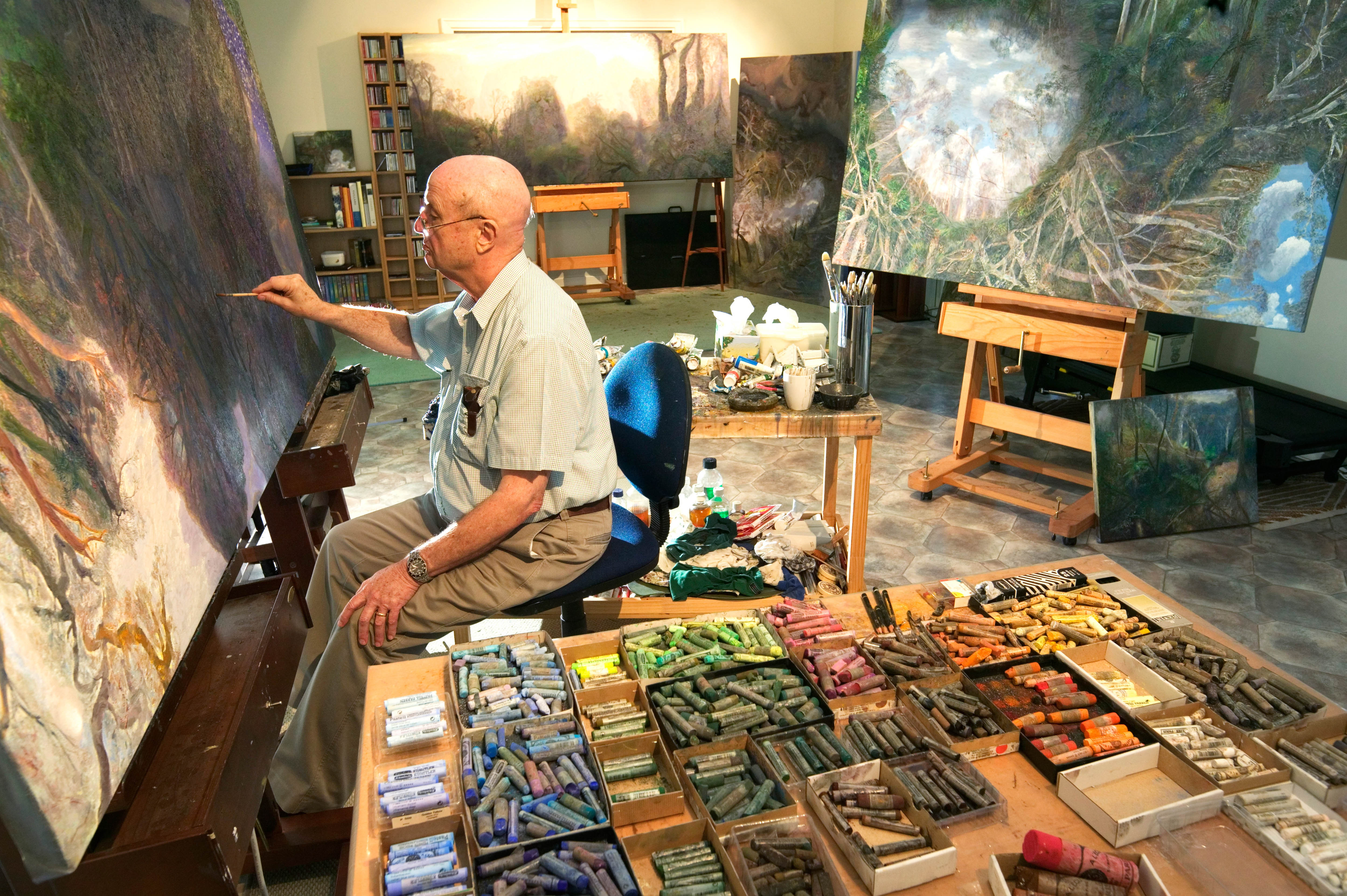
Immortalising those elements of nature which seem eternal – from the stormy clouds, mysterious in their gauzy substance to the endless forest, teeming with life – the present work thus offers a powerful manifestation of the artist’s enduring interest in the relationship between man and the cosmos. In stark contrast to his earlier bucolic farmyard scenes and landscapes which feature the genial folk figures of Bill and Shirley, here the viewer is confronted with a dark, sombre wilderness which, within the context of the artist’s oeuvre, may well be construed metaphorically as a sign of mankind’s spiritual abandonment. Notwithstanding, Robinson vehemently asserts to the contrary – that God is in fact closest to his subject in desolation and moreover, that the artist reveals himself through his pictorial absence. Thus, for Robinson, ‘finding himself’ as a painter, appreciating the landscape and becoming closer to God are all inextricably linked. Indeed, describing the experience of walking through the forest of 2000 year old beech trees near his property at Springbrook (which he famously captured in the highly acclaimed five-panel masterpiece Creation Landscape – Darkness and Light I – V, 1988, Art Gallery of Western Australia, Perth), the artist poignantly evokes his visit to one of the world’s greatest pilgrimage destinations: ‘I wanted to show the presence of God somehow, not only through the mystery of walking through Chartres Cathedral and walking through this forest, but also something about the nature of providence.’2
Like the best of Robinson’s achievements, To Beechmont with Storm Clouds Building celebrates the sheer genius of creation itself with a landscape that is as grotesque as it is beautiful, terrifying as it is marvellous. Imbued with a sense of joy and wonderment, the composition pays poignant homage to the universe and its benevolent creator, rejoicing in the infinite cycles of nature and the forest as a repository for hope.
1. James, B., ‘A Landscape We Thought We Knew’, Sydney Morning Herald, Sydney, 29 January 2003, p. 15
2. Robinson, cited in Fink, H., ‘Light Years: William Robinson and the Creation Story’, Artlink, 2001, vol. 21, no. 4
VERONICA ANGELATOS
